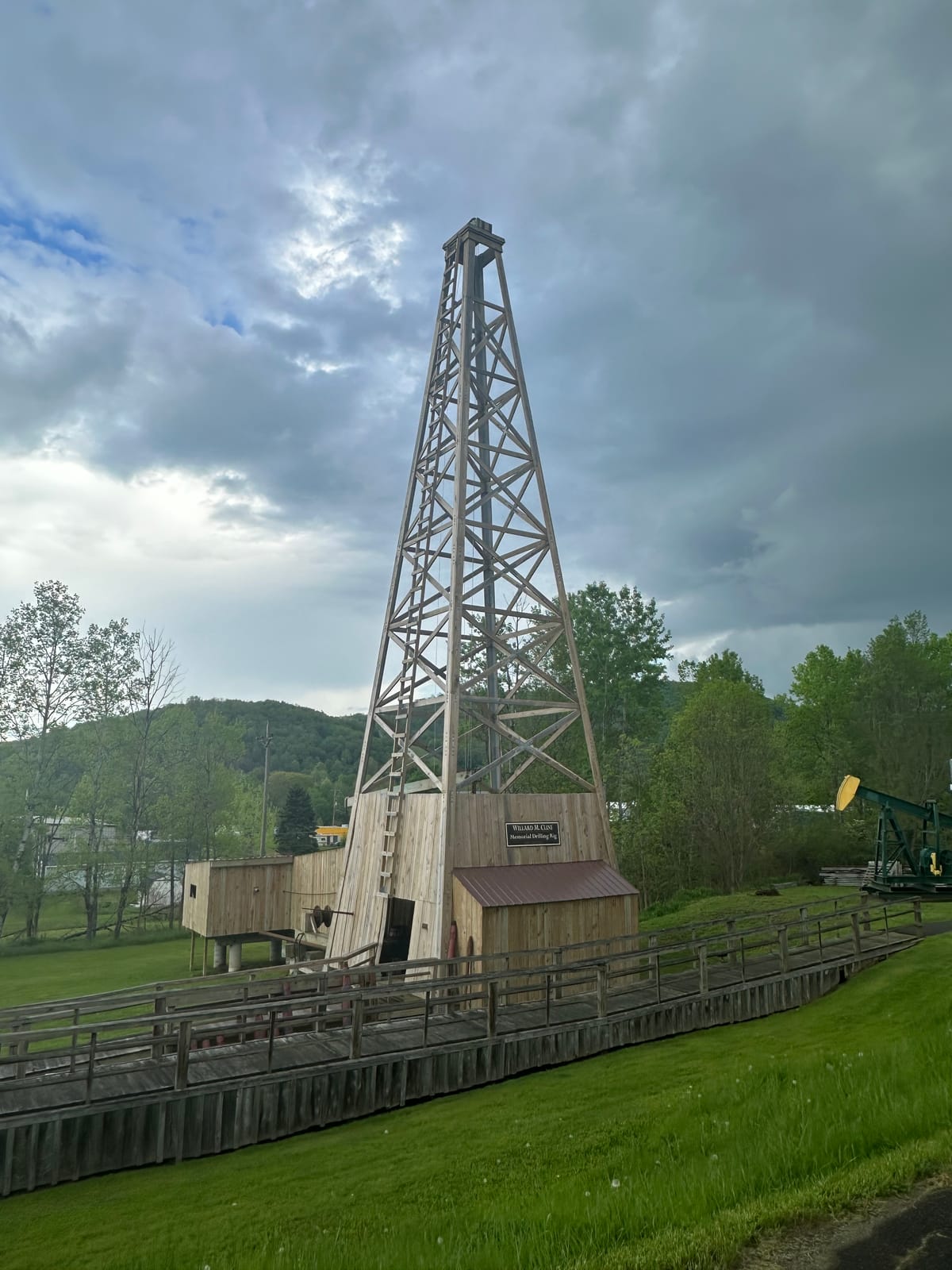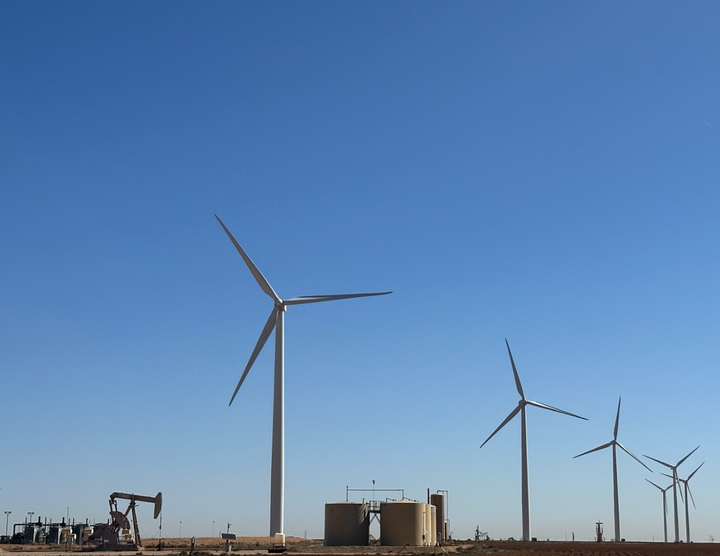Peak US Oil Reveals The True Hoax of the US Shale Revolution
The U.S. shale industry has peaked and it is still in a deep financial hole.

In 2019 the U.S. oil industry was on a roll and a long hot streak of constantly breaking records for new crude oil production. It would seem an odd time to write an article asking the question, “Will the Fracking Revolution Peak Before Ever Making Money?” but that is what I did.
And now here we are in 2025, everyone seems to have quietly agreed that the U.S. oil industry has peaked, oil prices are below the price the U.S. industry can collectively make money and it does appear that the whole U.S. shale fracking revolution will never even make enough money to break even. Pretty wild. Wilder still that I’ve been correct about this despite the overwhelming onslaught of financial media press coverage and promises by the likes of Treasury Secretary Bessent. It is pretty clear at this point that the financial press in this country works as the strategic communications arm of the fossil fuel industry. Has anyone seen even one article anywhere asking, “Where did the oil go?” Now that everyone admits that U.S. oil production has peaked no one seems to be asking about the promises of decades of permagrowth in U.S. shale industry. Doesn’t that seem odd? I’ve argued that the U.S. oil industry has engaged in massive reserves fraud by promising investors that there is a lot more oil and gas in the ground than they can actually produce. There was a time when knowingly lying to investors was considered fraud.
Where We Are Now
Mike Shellman at Oilystuff.com has many decades of experience in the oil industry and a great bullshit detector. I imagine working in that industry gives one many opportunities to develop that skill. Mike recently made the case that he does not expect the U.S. shale oil and gas industry to ever be able to even make enough money to just break even.
"Personally I believe that debt will, for the most part, never be paid back now as costs increase and well productivity declines.”
Interesting conclusion after more than a decade of hearing the shale oil industry “break even” pricing was $35 but not unexpected since I've been writing for almost that long saying those claims were pure fiction, as has Mike. He estimates the industry is currently $178 billion in debt.
So, a pretty definitive answer to my question from 2019. The U.S. shale industry has peaked and it is still in a deep financial hole. Meanwhile, the world has changed in some big ways that make the odds of a financial turn-around of the U.S. shale industry highly unlikely (this site is full of articles explaining what is happening with U.S. oil production but here is a good one to start with.)
The very obvious reason why the U.S. oil industry is not going to pay back any debt any time soon is that oil prices are expected to be below the price the industry needs to make money for at least the next two years. I’ve written about those economic realities here and here.
However, the near-term woes of the U.S. oil industry are not unusual due to the cyclical nature of the oil business. Prices go up and prices go down and various attempts at price manipulation are made by some of the world's worst people. And it now appears the Saudis are willing to make prices go down for a while to win back market share and that will mean a lot more financial pain for the U.S. shale oil players. But that is just noise in the big scheme of things. Rounding errors. What is different this time is that there is a structural change taking place in global oil demand. The world is facing an oil glut because the world is using less oil than was previously expected. And that is due to the rise of electric vehicles - from cars, to bikes and trikes to heavy trucks. Earlier this month the International Energy Agency (IEA) said that, “economic headwinds combined with record sales of electric vehicles will reduce global oil demand growth to 650,000 barrels per day for the remainder of 2025.”
The IEA expects the addition of electric vehicles to the global auto fleet will result in 5 million barrels per day of demand destruction by 2030, “with China responsible for half that amount.” We are rapidly approaching the point where there is no demand growth in global oil consumption. This will wreak havoc on the industry’s finances.
Remember when oil prices went negative in 2000? That was because they ran out of places to store the excess oil. Did you see this headline? U.S. crude oil storage demand surges as traders brace for OPEC+ price war. Should be a wild ride for oil investors.
There are all of the normal variables that could change this but right now a Trump created global recession is a likely one and that won’t help the oil prices. However, perhaps they can start a new war? Regardless, the real war is with electrification and they are already losing. I’ve been following Gregor MacDonald’s Cold Eye newsletter for a few years. He has a very solid track record of predicting global oil trends. I could write another whole article on what is happening with EVs and oil demand but this is the main detail we need to understand.
“The internal combustion engine vehicle no longer has a future, but it seems many OEMs [original equipment manufacturers] completely misunderstood the timeline to that outcome was far more compressed, far more rapid than they assumed.”
When I wrote about the economic realities of the U.S. shale industry finances in 2019 I didn’t even consider the fact that we could be facing an oil glut in 2025 because of the rapid take off of EVs. Even so, it was possible to see the bleak future for the industry. And now it is here.
Clean Up in Aisle America
In 2020 when I wrote that the Bakken shale play had peaked (an unpopular but correct take at the time) I pointed out that the Bakken oil industry was unlikely to ever fund the required cleanup of the mess it had made in North Dakota.
I’ve since written a lot more on the topic of oilfield liabilities. And the situation is so much worse than it was in 2020 thanks to the situation in the Permian shale fields of Texas and New Mexico. Here are a group of articles on the topic. In general the situation is that the U.S. oil industry is likely on the hook for a half to a full trillion dollars in various liabilities. A big chunk of that is just the cost to properly close (cap) the wells and remediate the land around those wells. However, since 2019 Texas has taught us that thanks to the reckless approach of the U.S. oil and gas industry, the costs are likely higher. How much higher?
“‘But that money doesn’t go nearly far enough. The cost to plug just two emergency wells this fiscal year hit $9 million, nearly 40% of the state’s entire annual plugging budget, according to Craddick, the agency chair.”
How many of these emergency wells will we see? Did anyone predict oil sinkhole lakes in the Texas desert?
How about the long-term costs to clean up the PFAS and everything else they are pumping into the ground? US oil firms pumping secret chemicals into ground and not fully reporting it.
How about “unprecedented” well blowouts and oil spills?
How about the risks to groundwater?
Remember this? Fracking halted at Ohio site linked to recent earthquakes. That problem didn’t go away. They had an earthquake in Texas this year that resulted in a broken pipeline which caught on fire. That will become a bigger problem.
Then there is the big question of radioactive waste. The oil industry enjoys a blanket waiver from having to treat its known radioactive waste as hazardous. As this week’s excellent article on oilfield worker risks notes, the radiation is a real issue. I will again recommend you read Justin Nobel’s Petroleum-238 to learn about this very real problem. Radiation - the original forever toxin!
Lessons?
It’s been interesting watching this play out over the last six years. In 2022 I wrote this, “Finite resources are real constraints that no magical thinking or predicting by the industry can overcome” while explaining that concerns about the U.S. building four new crude oil export terminals were pure fantasy. We simply didn’t have the oil. Still don’t.
One lesson from all of this is that if an industry will lie about science to protect profits it is highly likely they lie about everything. I think the evidence is pretty indisputable on that one at this point. But how about we learn from this? Have you heard about the big LNG boom we have been promised by all of the same people? Anyone think we might not want to base the future on those lies? If anything the major media has shown us they are less likely to report the truth in this new era than ever before so don't expect to find reality in their reporting.
The U.S. LNG industry may end up being more of a financial disaster than the U.S. shale industry as a whole. I plan to write about that in the near future. However, one of the obvious reasons for this is that the rocks don’t lie. Just like I said in 2019 about oil. The gas isn’t there (Disclaimer: This refers to economically recoverable gas that can be produced, liquefied and exported for a profit. The world will never run out of oil and gas. But the U.S. is running into hard limits on producing oil and gas that can be profitable.)
America’s big banks continue to double down on fossil fuels. Goldman Sachs was out cheerleading for LNG in the media this week. Do they believe in its future or do they know what is happening and they are just trying to unload bad assets on dumb money? After the financial disaster of their major LNG IPO with Venture Global, it’s likely the latter.
Back before we had an administration intent on destroying the U.S. economy I wrote about this situation and how it deserved some serious policy considerations. While that won’t happen in the U.S. now, it still would be a really good idea for the rest of the world.
Bonus: Thought Experiment
U.S. oil production peaked at the end of 2024 and has declined by roughly 250,000 barrels per day since then. Reuters says production will peak in 2027 but 2024 looks much more likely. And we also know this, “Exxon aims to more than triple its production in the Permian, the top U.S. shale field, to 2.3 million barrels per day (bpd) by 2030”
Remember that after buying Pioneer the new combined Permian acreage for Exxon was supposed to produce 1.3 million barrels per day.
If U.S. oil production is declining and expected to soon peak, can someone tell me how Exxon is going to increase its output by a million barrels per day just in the Permian? Reminder: Exxon is facing fraud charges for past outlandish predictions. Perhaps this time is different?



Comments ()